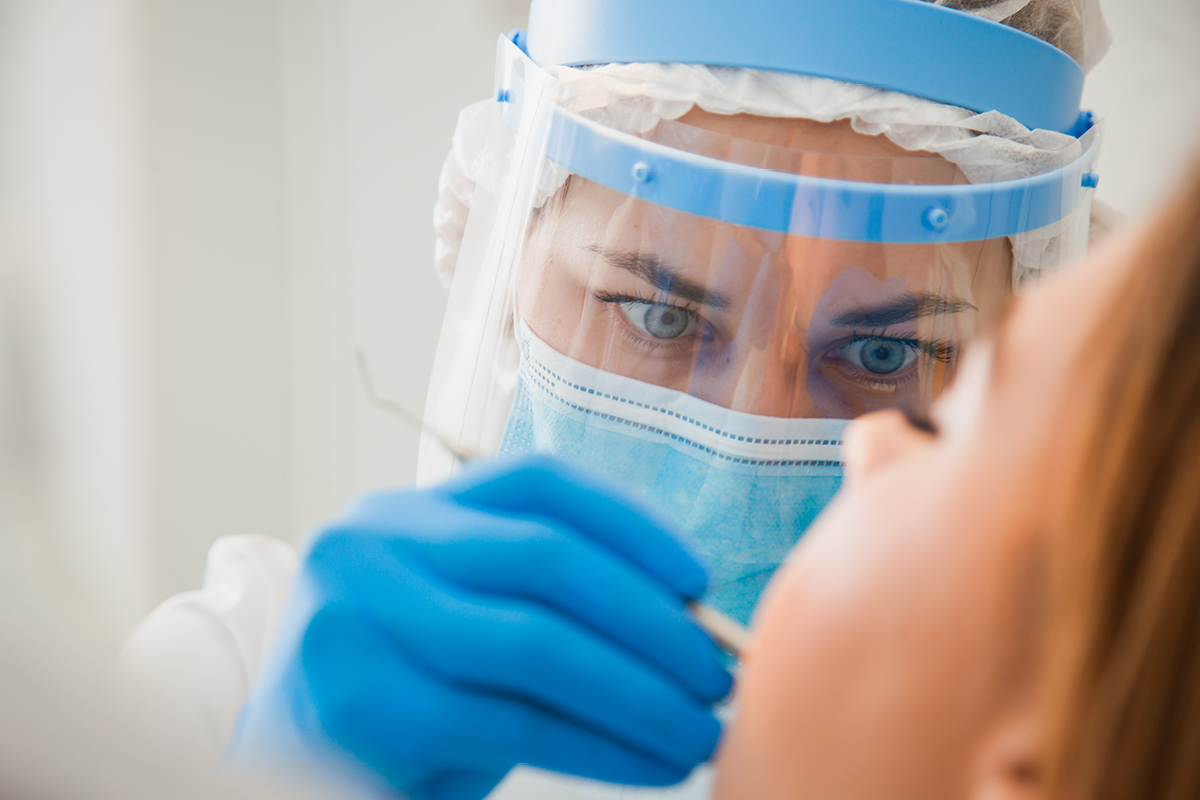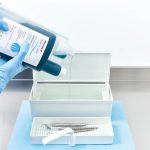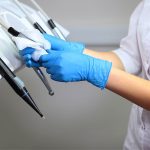
An article published in the New York Times [1] on 15 March 2020, analysing the risk of COVID-19 infection according to occupation, revealed that the workers at greatest risk are dental hygienists (100% risk), dental assistants (96% risks) and dentists (95% risk), followed by healthcare professionals. But what are the main sources of infection, how is it transmitted and how can it be minimised?
In healthcare settings, the sources of infection can be human and environmental. The former include users, professionals and, occasionally, visitors; they can include individuals with active disease, with infections in the incubation period or chronic carriers of infectious agents. Patients’ endogenous flora itself can constitute a difficult-to-control source. The environmental sources of infection include, above all, equipment and devices.
Transmission of infection refers to the transfer of a microorganism from one individual to another. In a dental practice, microorganisms are transmitted by various modes:
- by contact
- by droplets
- by airborne particles
Below we analyse each of these three types of transmission and try to understand how to contain the spread of SARS-CoV-2.
Transmission by contact
It is the most common mode of transmission, it can be broken down into two subgroups:
- Direct contact: requires skin-to-skin contact, between a susceptible/recipient host and an infected/colonised individual, for example during healthcare interventions involving physical contact between operator and user.
- Indirect contact: involves contact between a susceptible/recipient host and contaminated objects or instruments, for example, when handling linen, contaminated surgical instruments, etc.
Transmission by droplets
Droplets with diameters larger than 15 micron, containing microorganisms, originate from the infected subject and are expelled by coughing, sneezing, talking or during the performance of certain procedures, such as the aspiration of secretions. Transmission occurs when droplets are expelled a short distance away, and they settle on the conjunctivae, oral mucosae or mouth of the host. Droplet transmission must not be confused with airborne transmission.
Airborne transmission
Airborne transmission occurs through the dispersion of droplet nuclei, small residual particles with a diameter of less than 15 microns, or dust particles containing the infectious agent that remain suspended in the air over a long period. The microorganisms conveyed in this way can be carried long distances by air currents and inhaled by a susceptible host in the same room or even further away from the source, depending on environmental factors [2].
The risk of SARS-CoV-2 infection in the workplace (generally speaking, not regarding the dental sector alone) can be classified according to three variables:
- Exposure: the likelihood of coming into contact with sources of infection while carrying outspecific occupational tasks (e.g. healthcare sector, special waste management, research laboratories, etc.);
- Proximity: the intrinsic characteristics of the job that do not permitadequate social distancing (e.g. specific assembly chain tasks) for part or almost all of work time;
- Aggregation: jobs involving contact with individuals other than company co-workers (e.g. food service, retail, entertainment, hospitality, education, etc.) [3].
Looking specifically at dental sector professionals, according to scientific evidence, dental staff present 50% greater changes in nasal bacterial flora than the rest of the population, with a higher average likelihood of contracting respiratory infections than other physicians [4].
It was evaluated that the risk increases when:
- contact is close (<1 metre) and prolonged (>15 minutes) or contact is repeated or continuous, such as to increase the overall contact time [5]
- the manoeuvres and procedures carried out are likely to produce airborne particulates [6]
In the current COVID-19 emergency, the risk of SARS-CoV-2 transmission depends on:
- type of transmission: by droplet and by contact;
- type of patient: the most contagious patients are those who cough and sneeze; if these patients wear a surgical mask or cover their nose and mouth with a handkerchief, the risk of infection by the virus is considerably reduced;
- type of healthcare contact: the risk is considerably increased when contact is close (<1 metre), prolonged (>15 minutes), repeated or continuous, such as to increase the overall exposure time both in hospital and in community healthcare settings (for example, community practitioners providing repeated and/or continuous healthcare services to suspected and confirmed cases of COVID-19) or those carrying out procedures and manoeuvres likely to produce patient secretion airborne particulates (for example during cardiopulmonary resuscitation, intubation and extubation with associated procedures such as manual ventilation and open aspiration of the airways, bronchoscopy, forced expectoration, therapies that generate mist, NIV, BiPAP, CPAP, high-frequency oscillatory ventilation, high-flow nasal oxygen therapy, nasopharyngeal swab, procedures associated with tracheotomy/tracheostomy, surgery and autopsy procedures involving high-speed equipment, certain dental procedures) [7]
Therefore, considering that in the dental sector, dentists, hygienists and assistants are constantly exposed to these factors, how can the spread of the virus be contained? In addition to frequent hand hygiene, it is mandatory to use the recommended PPE (personal protective equipment) during procedures or in settings at risk of airborne particulate generation.
More specifically, in dental practices, operators must be provided with:
- FFP3 or FFP2 face masks
- Disposable gowns/aprons
- Gloves
- Safety glasses/goggles/visors
Bibliography
- The Workers Who Face the Greatest Coronavirus Risk. The New York Times
- Finzi G. at al. Linee guida per il corretto utilizzo degli antisettici – disinfettanti. 2009
- Documento tecnico sulla possibile rimodulazione delle misure di contenimento del contagio da SARS-CoV-2 nei luoghi di lavoro e strategie di prevenzione” – INAIL – 2020
- Cristina ML et al., 2007; Clark A et al., 1974; Davies KJ et al., 1994
- Istituto Superiore di Sanità, 2020; WHO 6 april 2020
- Istituto Superiore di Sanità, 2020; Del Rio C et al., 2020
- Indicazioni ad interim per un utilizzo razionale delle protezioni per infezione da SARS-CoV-2 nelle attività sanitarie e sociosanitarie (assistenza a soggetti affetti da COVID-19) nell’attuale scenarioemergenziale SARS-CoV-2 – Gruppo di Lavoro ISS Prevenzione e Controllo delle Infezioni – Rapporto ISS COVID-19 – n. 2/2020 REV. 2
Do you want more information on Zhermack Dental products and solutions?
Contact us




 Zhermack SpA has been one of the most important producers and international distributors of alginates, gypsums and silicone compounds for the dental sector for over 40 years. It has also developed solutions for the industrial and wellbeing sectors.
Zhermack SpA - Via Bovazecchino, 100 - 45021 Badia Polesine (RO), Italy.
Zhermack SpA has been one of the most important producers and international distributors of alginates, gypsums and silicone compounds for the dental sector for over 40 years. It has also developed solutions for the industrial and wellbeing sectors.
Zhermack SpA - Via Bovazecchino, 100 - 45021 Badia Polesine (RO), Italy.


